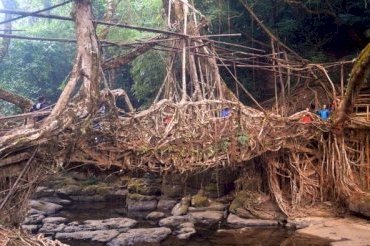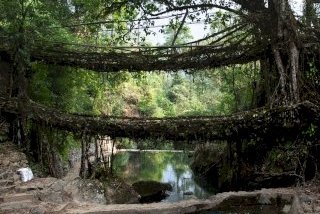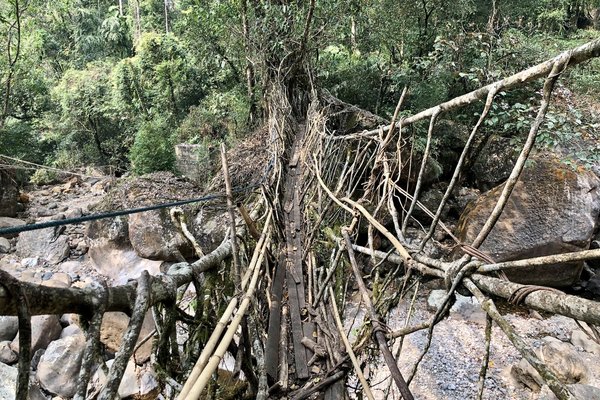India
Jingkieng jri: Living Root Bridge
Site Info
Official Information
- Full Name
- Jingkieng jri: Living Root Bridge Cultural Landscapes (ID: 6606)
- Country
- India
- Status
-
On tentative list 2022
Site history
History of Jingkieng jri: Living Root Bridge
- 2022: Added to Tentative List
- Added to tentative list
- Type
- Cultural
- Criteria
Links
- UNESCO
- whc.unesco.org
All Links
UNESCO.org
- whc.unesco.org — whc.unesco.org
Community Information
- Community Category
- Cultural Landscape: Continuing
Travel Information
Recent Connections
News
No news.
Community Reviews
Show full reviews
Although our tour operator first suggested the Double Decker bridge, it became clear to me that the seven-hour round-trip trek, which reviewers usually describe as "gruelling", "steep" or even "moderately difficult", was probably unfeasible for me. The two options left besides Cherrapunjee are the semi-destroyed bridge, which can be accessed by a concrete road, and the one in the village of Riwai. We chose the latter and did well. I don't know how to get to the bridge by public transport - but in India, this is not really an issue, I don't think there are any tourists who want to travel around North-East India by public transport. You can get there by car nowadays - the tarred road up to the path leading to the bridge had just been built when we were there and is certainly passable since then. Riwai is just 9 km from Mawlinnong, 'the cleanest village in Asshai', and is in fact as clean, tidy and pleasant as its more famous brother, for which they even charge an entrance fee. The bridge is about a 10-minute walk from the end of the tarmac road, and the path is well-walked, although there are a few steps in between, but thankfully there are railings everywhere. A few metres before the bridge, a small table in front of the bridge charges the villagers an entrance fee - Rs 30 per person. The bridge itself is really impressive - built from the roots of the ficus elastica, it is …
Keep reading 0 comments
The fact that 'living root bridges' in Meghalaya state haven't made it to UNESCO list yet, and that Indian government only put them as candidate last year, is surprising. The main criteria - outstanding universal value - is obvious from the moment we see these unique structures. They're created by slow - taking several dozen years - shaping of growing tree roots by Khasi and Jaintia tribes in Northwest India. Once mature, they can serve the pedestrians for ages - holding up to 50 people, with such wonders as 'double decker' and double-lane bridges. They blend into surrounding jungle, resulting in a mood that we'd rather expect from a fairy tale scenography. Haven't seen anything similar in other parts if the world and I doubt it can be matched for uniqueness by other 'living' structures (although I appreciate that shaping a bonsai tree also takes hundreds of years :) ).
The logistics there is a bit inconvenient as the 'seven sisters' states in North-Eastern India are off the beaten track - but nothing too complicated: we flew from Delhi to Gujarati, took local transport to Shillong and arranged a private car with driver to take us to the place. Just please remember that the surrounding area is called 'valley of 10,000 stairs' and the name comes for a reason! We visited in 2011, so the practicalities may have changed - although the entire region seemed to be running at pretty slow pace, so I doubt they're much different today. …
Keep reading 0 comments
